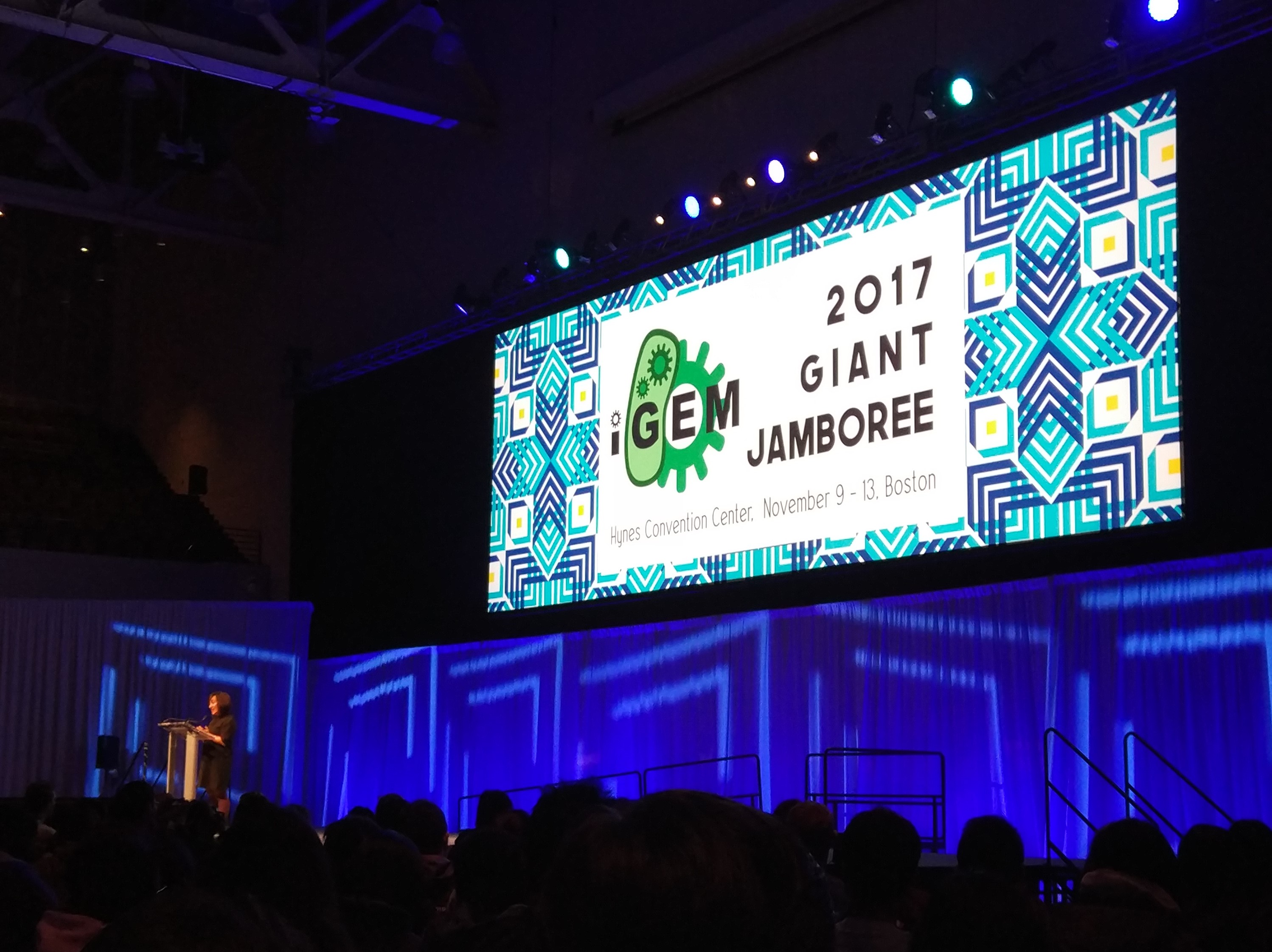November 8th, Boston

This is my first time to be in America, I feel so excited to get this opportunity to present our project on behalf our school. We’ve been working on this project for the last 6 months. I dare not to say how great our project is, we are just a bunch of junior student. We confronted a variety of obstacles, failing to get decent eletrophoresis bands, running into PCR issues, etc. Maybe it sounds easy for a well-trained graduate students, but it baffles us a lot at the first several months. The most fascinating part of iGEM competition is that we did everything by ourselves, ranging from being a lab manager to procure all the instruments and materials, to perform every experiments, analyzing data and construct mathematic modeling. Plus, I have learned how to design an nice-looking webpage, since we have to present all of our result on our webpage, which will be a necessary part for judges’ appraisal.
iGEM opening ceremony

Wow, fastanstic opening events, people from all over the world. There are 301 teams this year and we are iGEMers! iGEM competition is a prestigious interdisciplinary contest for synthetic biology, held by MIT annually. Every team is aimed to construct one kind of biological designs using the philosophy of synthetic biology – our body is like a car which constitutes lots of parts, all these parts assemble together comes the car. With the advanced development of science, we know that life is also built upon each “part”, the most basic part – the permutation of four base part ATCG. If appropriately controlled and designed, we can make these parts assemble and act in a certain way that might be different from its natural counterpart, but may benefit our life and society.
If you would like to know more about iGEM, click the link below.
Our team and project

Here are our team members. In general, we aim to apply a novel dehalogenase, RdhANP, to dispose of industrial wastewaters by degrading the persistent and toxic pollutant, halogenated organics. To optimize its application, on the one hand, we used conventional synthetic biological methods for reference to increase the production of functional dehalogenase. On the other hand, we planned to introduce our engineered bacterium, Bacillus megaterium into hybrid membrane bioreactor(HMBR) to make our project more practical. Engineering and modification were carried out upon our B. megaterium.
If you are interested in our project, click the link below!
WHU-China 2017 project website
Visiting Harvard University

Visiting Harvard University, so much squirrels!